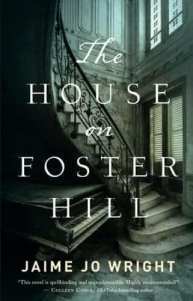Susan Appleyard's Blog, page 12
April 20, 2018
My review of Irina’s Story by Jim Williams
At the opening of the book, Irina is ninety years old, but she still has a wry sense of humour and all her faculties. The story begins before she was born into a family of a privileged bourgeoisie. It begins toward the end of Imperial Russia and continues through the revolution, wars, the repressions of the Stalin-era, to Moscow of 1990 and the rise of capitalist-leaning gangs.
We first meet her father, the unimaginative and prosaic Nikolai and his more adventurous cousin, Alexander, their wives and others who populate their world. Her handsome father cannot abide Irina because she is a hunchback, while her beautiful mother sees past her deformity and loves her but suffers the guilt of bringing such a creature into the world. This is not so much a matter of strife between the couple but of disappointment with each other, that is never spoken of. Irina stalks through the house, listening at doors and hiding in bushes. From the family’s ‘dinner table talk’ we learn that the seeds of revolution, already sown at the time of the emancipation of the serfs, are germinating.
From her own memories as well as journals and letters she has collected Irina informs us of the politics of the time and the progression of the wars, providing a valuable and relevant background to the stories of the various family members as relationships are destroyed along with the world they once knew. (The murder of the Imperial family is not mentioned.) The author’s knowledge of how war was conducted in those days can only have been the result of extensive research. Either that, or he is over a hundred years old and was there.
There is a cast of colourful characters. Even the weak and unlikeable ones such as Nikolai and the ones who turn into bitches such as Xenia and Adalia manage to evoke our compassion. It was fascinating to watch them change as they learned to cope with their changed circumstances.
This novel is a family saga, a riches to rags story and a tale of unrequited love. It’s also very tragic. For me, it is the best kind of historical novel – a great story that furthered my knowledge of the era. I cannot praise it enough.
*****
April 3, 2018
Bookish Happenings!

Today I was going to post my review of The House on Foster Hill by Jaime Jo Wright but it doesn’t look like it’s going to happen. I’m hoping tomorrow to post my review and finish up a couple of review drafts. I’ve been trying to catch up on my backlog of reviews and let me tell you it is a LOT of work! When will I be caught up? To tell you the truth, I’m not sure. The industry needs more book bloggers and readers!

There are so many wonderful things about why a person should read every day. On March 31 I wrote on Facebook, “I love stories and the growth of one’s self that comes from the craft. Words are beautiful. Words are harsh. Words are emotional and often times they feel unforgiving and undeserving. Words together tell us about many things. What we come away with…
View original post 149 more words
April 2, 2018
Review of Walking Wounded by Anna Franklin Osborne
This book covers a lot of ground, from the first World War to beyond the second World War, but the reader catches only a glimpse of what went on ‘in the trenches’. The story is really about three women who are left behind to cope with the relentless bombing, the rationing, and the changes that war has brought to a once-happy and close family while worrying about their menfolk.
It took me some time to get into it, to feel involved with the family, but eventually, I was caught up in the drama. All three of the women are characters that easily evoke the reader’s sympathy and liking. They give each other love and emotional support when needed. The tears and the hugs are plentiful. Although their lives are humdrum, I could never forget there is a war going on in the background supplying the tension. We wonder which of the soldier-boys will come back. It is, not surprisingly given the context, a sad story, yet with a few smiles among the tears.
This is a debut novel and, as such, praiseworthy. However, there are some problems with the writing. The author relies a lot on ‘telling’. This is an emotional story and yet I felt those emotions at a distance because with the absence of ‘showing’ the characters’ senses are not engaged. There was little description. The house the family lived in was described merely as ‘the big house’. The boys spent time at the pub, but I never got a sense of what an English pub was like – the noise, the smell, the smoky atmosphere. The same is true of the bomb shelter. Also, the book would benefit from a good proof-reader. The author uses far too many run-on sentences and commas instead of periods.
Despite these flaws, I enjoyed the story of women in war-time.
***
March 11, 2018
It’s amazing how new documents and artefacts keep emergin...
It’s amazing how new documents and artefacts keep emerging. Here is an account from the reign of Richard III.
March 7, 2018
The Leper King by Scott R. Rezer. Book 1 of the Magdalene Cycle
The Leper King is set in the 12th century in the Holy Land.
Baldwin IV is an easy protagonist to admire. He is still a boy when he becomes King of Jerusalem during a turbulent time. Throughout his short life, and through sheer strength of will, he deals with challenges that would test older, healthy men. Baldwin is tormented by his leprosy, and the author graphically describes his worsening condition. Eventually, he comes to terms with his imminent death and even comes to understand why he has been afflicted. He is wise and brave beyond his years, dutiful and serious but occasionally mischievous. In spite of his youth and disease, he leads his armies against the enemy, Salah-ed-Din (Saladin) who is making gains in the Holy Land. In other books of the period I have read, Salah-ed-Din is portrayed as a rather shadowy enemy of the crusaders. In this book, he emerges as a full-bodied character with his own point of view. In fact, all the main characters are three-dimensional.
As Baldwin’s disease progresses, the princes of Outremer jostle to gain an advantage in the next reign. Menace, intrigue, rebellion, magic and the supernatural in the form of Mary Magdalene as an immortal spiritual guide all play a part in this dark tale. I could have enjoyed it more without the magic, but it is an integral part of the story, and I’m sure many other people will enjoy that aspect. The balanced portrayal of the two sides in the struggle is refreshing. The author has added a touch of authenticity by using Arabic names for people and places. This is done from the pov of Salah-ed-Din.
There are a few grammar errors but nothing serious.
I give this book four stars.
January 26, 2018
Catherine Dickens: Outside the Magic Circle by Heera Datta.
Set in 19th century London.
[image error]
Catherine Dickens, the wife of the great Charles Dickens and mother of his ten children, suddenly finds herself abandoned by her husband after twenty-one years of marriage. He provides her with a house and even a financial settlement on condition that she sign a draconian agreement that separates her from her minor children and forbids her from speaking publicly about the matter. (Or the 18-year-old actress he has taken up with.) Of course, Mr Dickens speaks publicly and often about his wife as well as issuing press releases vilifying her as an unfit mother and even suggesting she had a mental problem.
The problem for Ms Datta was to create a character in the respected author and champion of underprivileged women, who would do such a terrible thing to an undeserving wife; and also to create a character for Catherine that would show why she didn’t fight, why she passively signed an agreement that left her bereft of her children and painted her as the one at fault in the failed relationship. The author succeeds brilliantly.
We see Catherine go through a range of emotions, in turn, miserable and hopeful, angry and accepting, pitiful and passive. But we never see her step outside the role of a woman who has been so dominated by a controlling man that she has little will of her own. We may not admire her but we never despise her. We want to cry with her for the repeated blows and give a great cheer when she finds a little joy.
Ms Datta digs deeper into the pathos of Catherine’s situation to discover that when she is with old friends she is uncomfortable. She worries they wonder how she has adapted, if she knows about the actress, and what kind of mother she really was. But she is also uncomfortable with prospective new friends who don’t know who she is because she has nothing to talk about with them, no husband, no children, no household concerns. It is another, cruel layer of aloneness.
It is always fascinating for authors to read about great figures of literature, but I believe anyone who reads this book will never see Charles Dickens in the same light again.
This is a sad book, but well worth reading. I heartily recommend it. Find it here:
December 18, 2017
The Goldsmith’s Wife by Anita Seymour
I found this an easy read, a family drama set in the late 17th century. The lady of the title is Helena, whose husband, Guy Palmer, sets up a mistress – a not-uncommon practice of gentlemen of that era. When she finds out, Helena, who is already strongly attracted to William, indulges in an affair. Helena’s relationship with the two men provides the trunk of the story, but there are many branches to hold the reader’s interest all the way through. The characters are all likeable and believable. In fact, it wasn’t until I had finished the book that I realised what was lacking: an antagonist. Did it spoil the story? Not at all.
I only wish I had read the first book of the series first. That would have helped me get a grip on a crowded list of characters, as well as explaining why space was given to characters who had no role to play. (Holdovers from the first book, I suspect.)
Recommended as a light read.
https://www.amazon.com/s/ref=nb_sb_noss?url=search-alias%3Dstripbooks&field-keywords=Anita+Seymour


November 20, 2017
My review of On Different Shores by Rebecca Bryn
This review was first published in Discovering Diamonds, the go-to place to get honest reviews of historical fiction.
The story begins in tried and true fashion: boy meets girl, boy loses girl, in this case to another man. Young Jem, a common labourer, does the honourable thing by standing aside so that Ella will marry the man chosen for her, the son of a prosperous farmer, who can give her a better life. Unfortunately, the husband turns out to be a coarse brute. The story really gets interesting when Jem, along with his two cousins, commits a murder and is sentenced to be transported to a penal colony. Never mind that she is married and has borne Jem’s son, Ella determines that somehow she will follow her love to the other side of the world.
Two things illuminate this book for me. First is the little nuggets of 19th century farming life Ms Bryn describes without in any way intruding on the story. Second is Ella’s awakening, as she learns little by little how few rights she has over herself and her child. As one of the men in her life says in all sincerity: ‘Why would you need rights? You’re a woman. Your pretty little brain isn’t equipped to deal with important decisions. You need the protection and support of a man, a husband.’ These words encapsulate the views of the time perfectly, especially as they are spoken by a good man.
Jem pays a terrible price for an atrocious act committed in a moment of madness, and Ella’s determination to join him leads her to adopt drastic measures. Yet it is not difficult to sympathise with the two.
I do have a couple of little gripes. The author uses pronouns instead of proper names far too often, leading to some confusion. Also, in the early chapters, I found the motivations of the two central characters difficult to believe. But these things in no way reduced my enjoyment of the book. Once the story got going it gained momentum with each page until, at the last, I was left wanting more. As it happens, books 2 and 3 are available.


November 1, 2017
Review for A Pledge of Better Times
It has been a long while since my last post because I had a little problem getting to Mexico this year. But here is the result of the reading I did along the way.
The focus of A Pledge of Better Times by Margaret Porter is the relationship between Charles Beauclerk, an illegitimate son of Charles II and his most famous mistress, Nell Gwynne, and Lady Diana de Vere, daughter of the Earl of Oxford, last of the ancient line of de Veres. However, the book has a wider sweep than that. It is populated by real historical figures, William and Mary, Queen Anne, Sarah Churchill, the tragic Duke of Monmouth and others.
Through the eyes of Charles and Diana, we see England’s growing disillusion with the Catholic James II and preference for the foreign but staunchly protestant William of Orange and his wife Mary, daughter of James II. We also experience Mary’s tender and poignant love for her warlike husband. So two love stories, with all their joys and tribulations in one book.
The characters are presented with finesse and the author draws us with impressive ease into lives replete with palace intrigue, scandal, thwarted ambition and tragedy.
I haven’t read anything of this period before and it was a pleasure to be introduced to it by this fine book. (Note to self: broaden your tastes, woman!)
I’m also grateful to the author for not using reams of (virtual) paper on descriptions of fashion. For me, it’s a case of less is better. What didn’t I like? Ms Porter’s editor let her down on several occasions. Such a fine writer deserves better.
***** Highly recommended


October 20, 2017
#ChillWithABook #AwardWinner Susan Appleyard talks all things #bookish @Mexisue1 @ChillWithABook
Here is my interview with Emma – The Little Bookworm.
Today I welcome historical fiction author, Susan Appleyard to talk about her recent Chill With A Book Award and all things bookish!
Hello, Emma and thank you for inviting me to be ‘under the spotlight’.
Huge congratulations on winning your Chill Award! You must be so happy that your work has been recognised in this way. Now, before we carry on, would you please introduce yourself to my readers, just in case they don’t know you already …
I was born in Yorkshire but immigrated to Canada many years ago with my little family of hubby and three children. Now I am at a stage in my life where I can spend only six of the warmest months in Canada and the other six in Mexico. It was in school that I learned to love English history, and that, with a couple of exceptions, has been the focus of my…
View original post 832 more words







